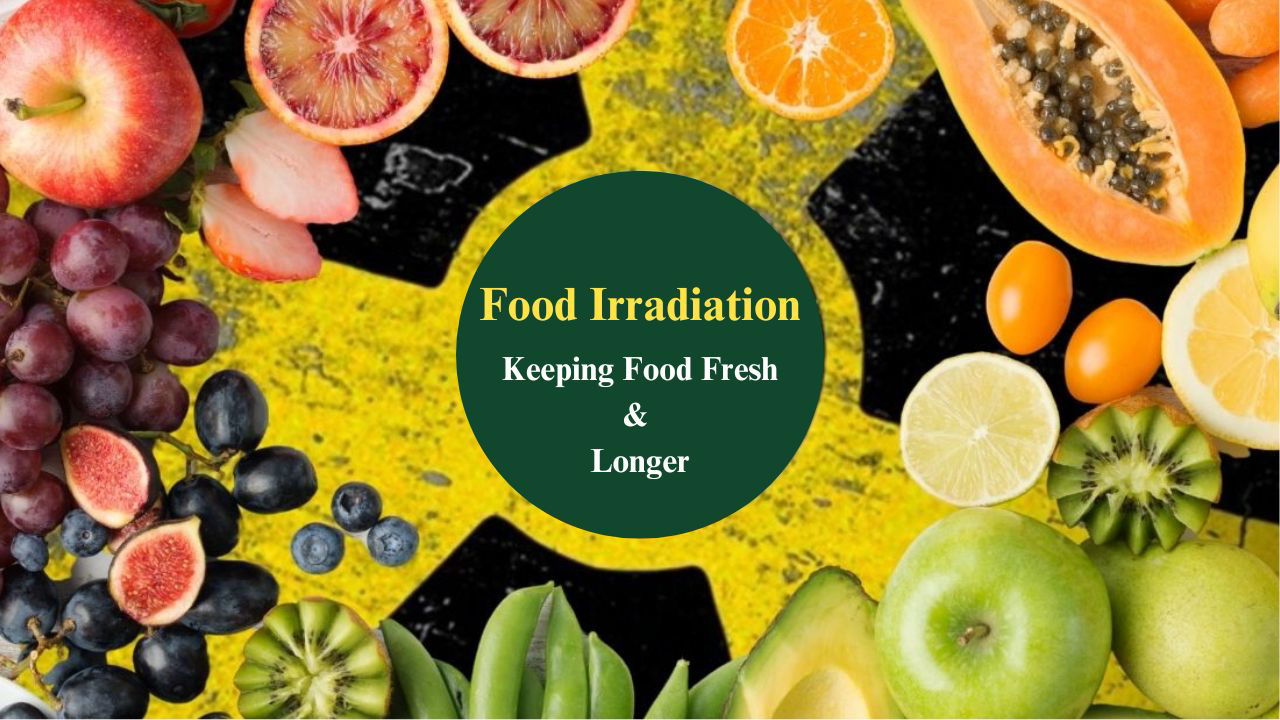
Food Irradiation is changing the game when it comes to keeping our food fresh for longer. This innovative technique has proven to be a lifesaver for extending the shelf life of everything from fruits & vegetables to cereals, pulses, spices, seafood, and meat products. What makes it stand out is that it's a clean and cold process, meaning it doesn't leave behind any chemical residue. It also takes care of harmful bacteria and pests, ensuring that our food stays safe and fresh. Plus, since the treatment can happen after the food is fully packaged, there's no risk of recontamination, giving us even more peace of mind.
Science Behind Food Irradiation
Research conducted at the Bhabha Atomic Research Centre (BARC) has demonstrated the effectiveness of irradiation in extending the shelf life of various agricultural products. For instance, irradiation has been used to prevent sprouting in stored potatoes and onions, thereby preserving their quality and nutritional value. Additionally, irradiation of mangoes began in 2007, with around 1150 tons treated in 2017 for export to the USA.
What is the Process of Irradiation?
The process of ionizing electromagnetic (gamma or x-ray) radiation is how food irradiation operates. Since food irradiation does not use heat to kill bacteria, it is referred to as a ‘cold’ approach. Heat is used in other food safety procedures like pasteurization and canning, which you may be more familiar with.
After food is made and packed, the irradiation procedure takes place. Food is put into a chamber and given a certain level of radiation exposure. The radiation enters the food and either destroys or stops the growth of microorganisms; it does not stay in the food. Although it is an additional precaution, radiation does not take the place of other food safety protocols.
Is Food Irradiation Good or Bad?
Yes, Irradiated food is safe. Because radiation lowers the amount of dangerous bacteria and parasites, meat and poultry are safer. Foods don’t become radioactive due to irradiation. The meal is infused with radiant vitality. The meal does not come into contact with the radiant energy source itself. Irradiated foods are healthy and nutrient-rich. Irradiation-related nutrient losses are less compared to those resulting from freezing and cooking.
Recent Developments in Food Irradiation
The harmonization of food irradiation rules with international regulations in India marks a significant milestone. This alignment has provided class-wise clearance of irradiated food items, paving the way for large-scale deployment of the technology. Such advancements ensure that farmers, traders, and end-users continue to benefit from the increased productivity and food security that nuclear techniques offer.
Technology Demonstration Plants
Two notable technology demonstration plants have been established based on BARC's research and development:
1. KRUSHAK at Lasalgaon, Nashik, Maharashtra:
Specializes in low-dose radiation treatment to inhibit sprouting and perform quarantine treatment of fresh produce such as mangoes.
2. Radiation Processing Plant (RPP) at Vashi, Navi Mumbai, Maharashtra:
Focuses on high-dose irradiation for microbial decontamination of products like spices, herbal products, and pet food.
Applications in Export and Domestic Markets
Radiation processing is crucial for both export and domestic markets. For export purposes, it enhances shelf life, ensures hygienization, and helps overcome quarantine barriers. India, known for exporting rice, seafood, spices, meat, poultry, onions, and mangoes, can leverage this technology to restructure costs in bulk commodity markets and sell value-added packaged commodities in retail markets.
Addressing Storage and Distribution Challenges
India's vast domestic market involves the procurement, storage, and distribution of massive quantities of cereals, pulses, fruits, vegetables, seafood, and spices. Unfortunately, significant amounts of these commodities are lost due to insect infestation and microbial spoilage. By employing radiation processing, these losses can be minimized, ensuring that both bulk and consumer-packed commodities remain safe and fresh throughout the supply chain.
Future Prospects and Entrepreneurial Interest
The adoption of radiation processing is on the rise among entrepreneurs, supported by the Board of Radiation and Isotope Technology (BRIT). BRIT assists entrepreneurs and industries in establishing gamma radiation facilities under a Memorandum of Understanding (MoU). As the demand for this technology grows, several new facilities will be required to process even a fraction of India's total agricultural production.
The application of food irradiation in agriculture is a transformative development that enhances the shelf life and safety of produce. With the continued support and advancement in radiation technology, India is well-positioned to meet its food and nutritional security goals while maintaining its reputation as a global agricultural exporter.
















